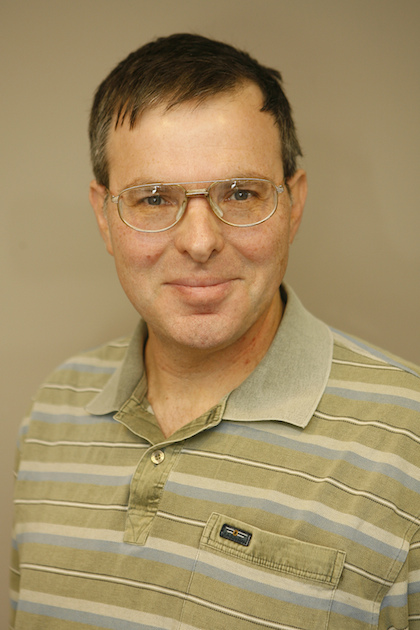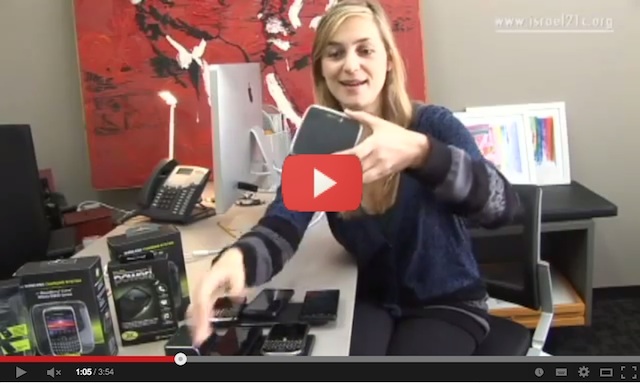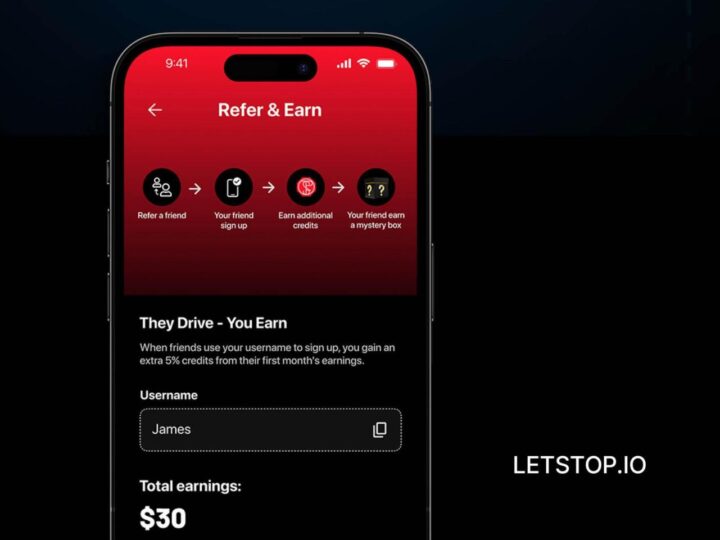One does not usually associate high-tech with the alleviation of anxiety, but PowerMat Technologies co-founder Ran Poliakine claims that his venture does just that.
“Imagine a world in which you didn’t have to worry about how and where to charge your mobile phones, laptops and tablets every time you left home,” says the 46-year-old innovator with a degree in industrial design from Jerusalem’s Bezalel Academy of Art and Design.
It is a world that is fast upon us, according to Poliakine and his business partner, Amir Ben-Shalom, 52, the scientist behind the technology that is already taking swaths of the United States by storm.
“Within a few short years, there will no longer be plugs, outlets and wires,” says Poliakine, during an interview with ISRAEL21C at his offices in the Neve Ilan communications complex in Abu Gosh, just west of Jerusalem.
“You’ll simply place your electronic devices on a table, and it will receive electricity from an embedded surface.”
Poliakine, whose workplace and home are both completely set up for this not-so-futuristic scenario, demonstrates on the spot. He puts his iPhone on one of many small round “plates” flush with the desktop, and it begins charging automatically. No cords, no fuss.
The “inevitable” shift to wireless electricity, he asserts, “will become just as intuitive as Wi-Fi. As soon as we stopped having to use a cable between our computers and a telephone jack, we took it for granted that we can receive data from the air. We will soon expect the same from our power.”
In GM cars by 2015
The idea to launch PowerMat was sparked by a 2006 conversation between Poliakine and Ben-Shalom in the parking lot of the building where the two innovators were already collaborating on a series of startups.
Laptops had become smaller and lighter, but the accompanying plugs and cords were – and still are — as cumbersome as ever. Poliakine said to Ben-Shalom: “Come on, we have to solve this problem.”
Ben-Shalom, a leading Israeli expert and teacher in the field of electricity, pointed out that it had been tried before, without success. But his momentary skepticism was replaced by a drive to make it work.

- Amir Ben-Shalom is the brains behind PowerMat.
By 2009, the pair had brought their prototype to technological giants, such as Nokia. “All of them said it was great, but nobody was willing to fire the first shot — to ‘cut the cables’ in favor of wireless,” says Poliakine.
Such a sea change necessitates the creation of an entire infrastructure, he explains, “like when the electrical grid had to be created.”
So they decided to go directly to consumers in the United States, through a series of partnerships. One such partnership was forged with Procter & Gamble, the largest consumer product company in the world.
This was crucial for taking PowerMat to the retailers, among them Duracell, which is owned by P&G. It was thus that Duracell PowerMat – a series of wireless charging solutions for iPhones and other smartphones and rechargeable backup batteries for carrying power on-the-go – came into being.
Next came partnerships with AT&T and Best Buy, among other leading retailers like General Motors . Not only did GM invest in the company, but announced that it will begin embedding its cars with PowerMat technology by 2015.
Powering consumers everywhere
During the Christmas season of 2009, PowerMat sold 750,000 units right out of the gate.
“The experience opened doors for us,” says Poliakine. “By 2010, there we were, a small Israeli company in Abu Gosh, using the technology invented by Amir [Ben-Shalom], manufacturing millions of pieces in China and selling to retailers in America.”
It was then, he says, that “we understood that for this revolution to take hold, we would have to create an entire ecosystem. We have to surround consumers 360 degrees, based on where they spend their time away from home, such as airports, train stations, concert halls, universities and restaurants.”
 The first two chains he approached were Starbucks and McDonalds, both of which are now involved in pilot testing of PowerMat technology. To date, 26 Starbucks branches in Boston and San Jose — and McDonalds in Manhattan — are fully wired and equipped.
The first two chains he approached were Starbucks and McDonalds, both of which are now involved in pilot testing of PowerMat technology. To date, 26 Starbucks branches in Boston and San Jose — and McDonalds in Manhattan — are fully wired and equipped.
Patrons simply place Duracell PowerMat-enabled mobile devices on the table in any of those locations and it will charge automatically. Those whose devices are not equipped with PowerMat technology receive a small key ring that hooks into their devices. This ring, called PowerKiss, was invented by a Finnish company that PowerMat purchased.
Still, says Poliakine, “To bridge the gap between technology and consumers, mass education is as crucial as it is challenging.”
Rapper and record producer Jay-Z not only invested in the company, but made a jazzy TV commercial promoting it.
This is part of PowerMat’s holistic approach to high-tech and overall aim to “redefine the language” of how everyone views the use of electricity.
“We didn’t invent the idea of wireless electricity. Over the last century, there have been at least 10,000 patents registered in this area. But up until about a decade ago, there wasn’t a real need for it. The two things that have altered this situation are the ability to generate much larger amounts of electricity at a far lower cost, and the fact that people have become mobile.”
But mobility creates anxiety, says Poliakine. At Rihanna’s recent outdoor concert in Tel Aviv, he heard fans complaining about their phones running out of juice while posting on Twitter and Facebook and videotaping the event. He is aiming to eliminate this difficulty when whole regions are powered by the cloud – possibly by 2015.
“This is a shift on a par with that of moving from horses to cars as a method of transportation. It is what we will be remembered for.”
Fighting for Israel's truth
We cover what makes life in Israel so special — it's people. A non-profit organization, ISRAEL21c's team of journalists are committed to telling stories that humanize Israelis and show their positive impact on our world. You can bring these stories to life by making a donation of $6/month.








